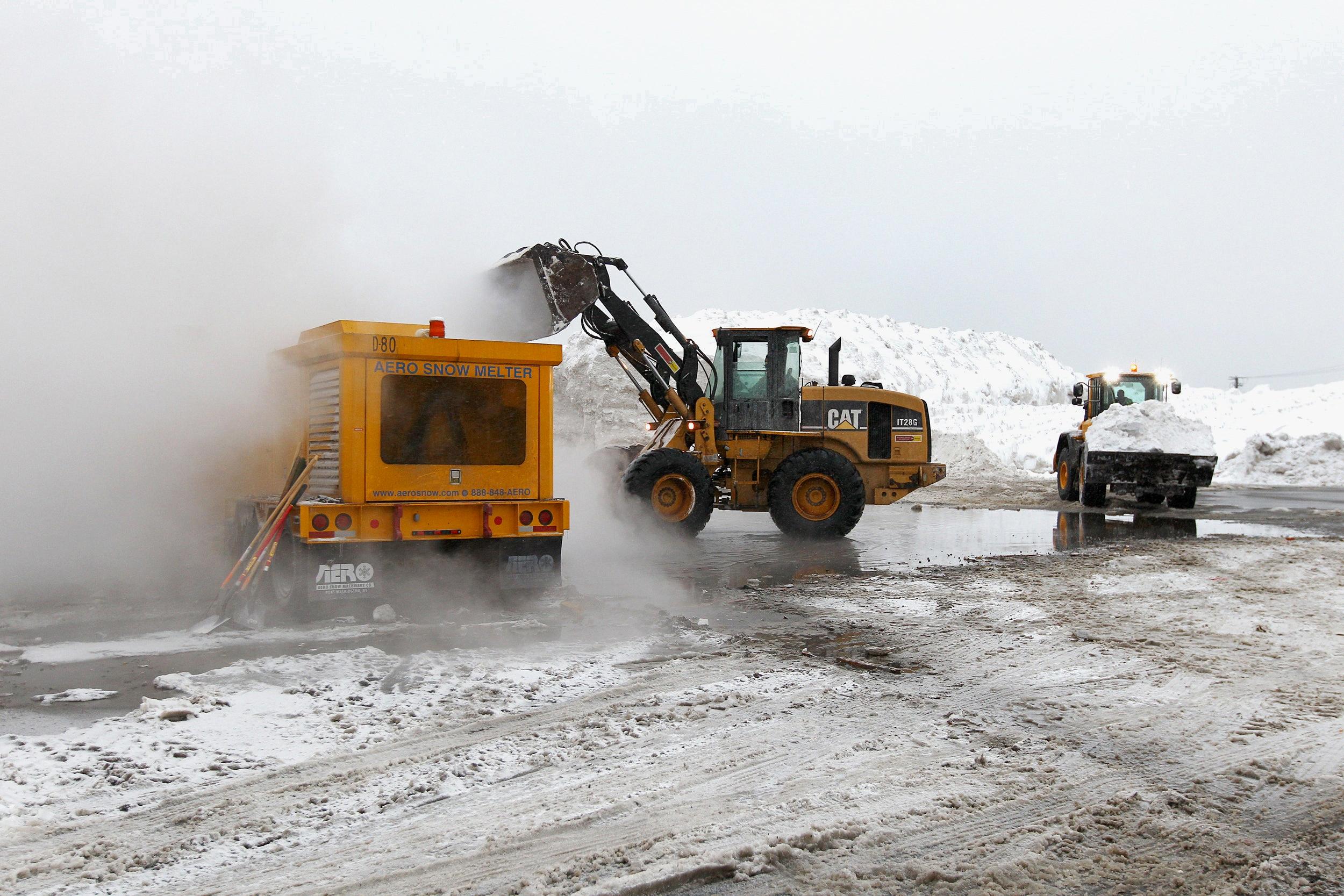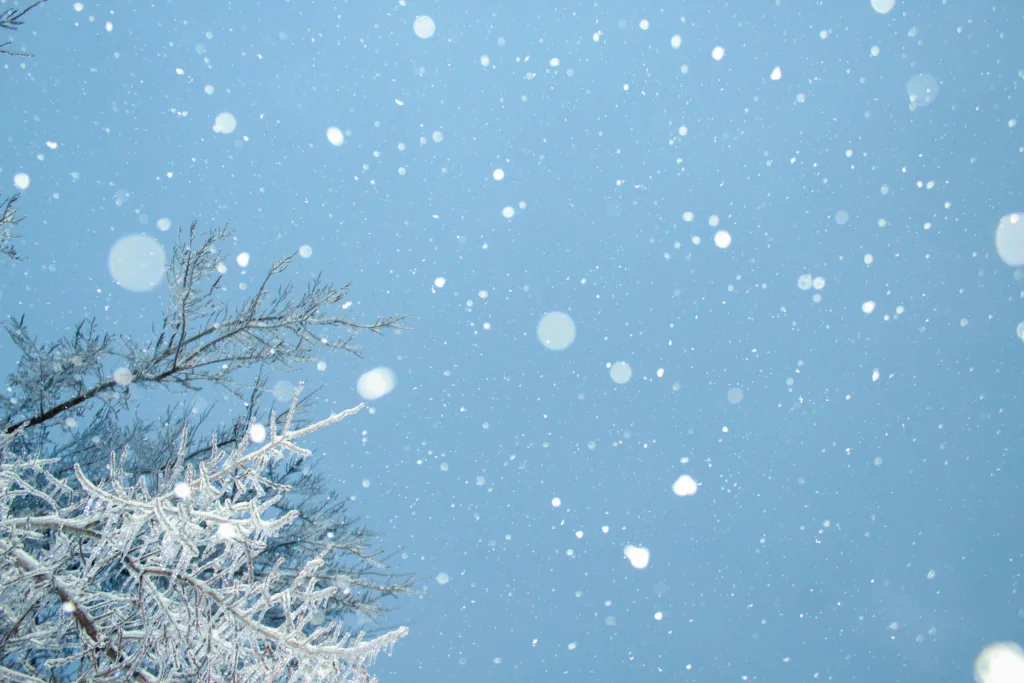Snow is a beautiful and magical phenomenon that can transform the world into a winter wonderland. However, it can also cause disruptions in daily life, especially when it coes to transportation and outdoor activities. Therefore, it’s essential to understand the science behind snow and how long it takes for it to melt.
The melting process of snow is affected by various factors, including temperature, moisture, wind, and precipitation. The temperature is the primary factor that determines how fast snow will melt. Typically, if the temperature is at or above 50 degrees Fahrenheit for three consecutive days, it can melt two to four inches of snow. However, if the temperature falls below freezing at night, the melting process will be slower.
Moisture in the air can also accelerate the melting process of snow. When the air is humid, it contains more water vapor, which can speed up the melting process. On the other hand, wind can carry away the moisture and preserve the snowpack, slowing down the melting process.
It’s important to note that melting snow requires a significant amount of energy and time compared to heating or cooling the air. The snow must build up enough energy on the surface to change state from a solid to a liquid, which takes time and energy.
If you want to melt snow quickly, you can create a hot water, soap, and rubbing alcohol mixture. This solution can be poured over the driveway or sidewalk, and the snow should bubble up and begin melting. This method works because snow contains many air pockets, and the solution gets into those pockets, allowing heat to penetrate further and enhance melting.
Rainfall can also accelerate the melting process of snow. When rain falls on snow piles, it gets into the air pockets, allowing heat to penetrate further, enhancing melting. However, if the temperature drops below freezing after rainfall, the melted snow can refreeze and create a dangerous layer of ice.
Melting snow is a complex process that is influenced by various meteorological variables. The temperature, moisture, wind, and precipitation can all impact the melting process. If you want to melt snow quickly, you can create a hot water, soap, and rubbing alcohol mixture or wait for rain to fall on the snow piles. However, it’s essential to be cautious when dealing with melting snow and ice to avoid accidents and injuries.
Melting Time for 3 Inches of Snow
The length of time it takes to melt 3 inches of snow can vary depending on several factors. One of the most significant variables is temperature. If the temperature remains at or abve 50 degrees Fahrenheit for three consecutive days, then it is possible to melt 2 to 4 inches of snow during that time.
However, if temperatures fall below freezing at night, the melting process will be slower. This is because the cooler temperatures will slow down the melting process, and the snow will refreeze overnight.
Another factor that can affect the melting process is the amount of moisture in the air. If there is a lot of moisture in the air, it can accelerate the melting process. On the other hand, if the air is dry, the melting process will be slower.
Wind can also play a role in the melting process. If there is a lot of wind, it can carry away the moisture and preserve the snowpack, which will slow down the melting process. However, if there is no wind, the moisture will remain close to the snow surface, which can accelerate the melting process.
The length of time it takes to melt 3 inches of snow can vary depending on several factors, including temperature, moisture in the air, and wind conditions.

Source: wired.com
The Slow Melting of Snow
Snow is composed of tiny ice crystals that form a solid structure on the ground. When the temperature rises aboe freezing point, the ice crystals start to melt, but this process takes a considerable amount of time. There are several factors that contribute to the slow melting of snow.
Firstly, snow has a high albedo, which means it reflects most of the incoming sunlight back into the atmosphere. This reduces the amount of energy that is absorbed by the snow and contributes to a slower melting process. Additionally, snow is a good insulator, which means that it traps heat and prevents it from reaching the ground. This makes it difficult for the snow to absorb enough energy to melt quickly.
Secondly, the process of melting snow requires a significant amount of energy. It takes a lot of heat to raise the temperature of snow from below freezing to above freezing point, and even more energy is required to turn the ice into liquid water. This energy is absorbed from the surrounding environment, and if the conditions are not optimal, the melting process will be slow.
The thickness of the snowpack also plays a role in the melting process. Snow that is packed tightly together will take longer to melt than loose snow because it has a higher density and is more resistant to melting.
The slow melting of snow is due to its high albedo, insulating properties, the amount of energy required for the melting process, and the thickness of the snowpack. It is important to note that these factors can vary depending on the location and weather conditions, which can impact the speed at which snow melts.
How to Quickly Melt a Large Amount of Snow
When it comes to melting a lot of snow quickly, there are a few options available. One of the most effective methods involves using a mixture of hot water, soap, and rubbing alcohol. Here’s how to create and use this solution:
1. Grab a bucket or other large container that can hold at least half a gallon of liquid.
2. Fill the bucket with hot water. The hotter the water, the faster the snow will melt.
3. Add one-fourth cup of rubbing alcohol to the bucket. Rubbing alcohol has a lower freezing point than water, which means it can help to melt the snow more quickly.
4. Add around six drops of dish soap to the mixture. The soap can help to break down the surface tension of the snow, making it easier for the solution to penetrate and melt the snow.
5. Stir the mixture well to ensure that all of the ingredients are thoroughly combined.
6. Pour the solution over the snow that you want to melt. It’s best to pour the solution in a straight line down the middle of the area you want to melt, so that it can spread out evenly.
7. Wait for the snow to begin melting. You should start to see some bubbling and melting withn a few minutes of pouring the solution on the snow.
It’s worth noting that this method may not be ideal for all situations. It works best on relatively flat surfaces, such as driveways or sidewalks. If you’re dealing with a large area of snow or a steep slope, you may need to use other methods, such as a snow blower or snow plow. Additionally, you should take care to avoid using too much rubbing alcohol, as it can be flammable and potentially dangerous. however, the hot water, soap, and rubbing alcohol mixture can be an effective way to quickly melt snow and get your outdoor spaces back to normal.
Does Rain Speed Up the Melting of Snow?
Rainfall can indeed accelerate the melting process of snow. This happens because snow contains numerous air pockets, and when rain falls on these piles, it can infiltrate thoe air pockets. This action allows heat to penetrate these piles further, thereby enhancing melting. Furthermore, rainwater is warmer than snow, and when it falls on snow, it can transfer some of its heat, further contributing to the melting process.
However, it’s worth noting that the rate of snow melting also depends on several other meteorological variables, such as wind and humidity. Wind can help to disperse the rainwater throughout the snow piles, making it easier for heat to penetrate and melt the snow. On the other hand, high humidity can slow down the melting process by reducing the amount of heat transferred from the air to the snow.
It’s also important to note that the type of snow can also affect the rate of melting. Wet snow, which contains more water than dry snow, will melt faster when exposed to rain. In contrast, dry snow, which contains less water, may take longer to melt, even when exposed to rain.
To summarize, rain can indeed melt snow faster by infiltrating air pockets and transferring heat. However, the rate of melting also depends on other meteorological variables, such as wind and humidity, as well as the type of snow.

Conclusion
Snow is a fascinating natural phenomenon that has a complex and intricate melting process. The temperature, moisture, wind, and humidity all play a vital role in determining how quickly snow will melt. It is essential to understand thse variables to know how to effectively manage snow and ice on our driveways, roads, and sidewalks. The hot water, soap, and rubbing alcohol mixture is an effective and environmentally friendly solution for melting snow. Additionally, rain can accelerate the melting process by penetrating the air pockets in snow piles, allowing heat to penetrate further. snow is a beautiful and awe-inspiring occurrence, and we must continue to learn and understand its behavior to manage it safely and effectively.
